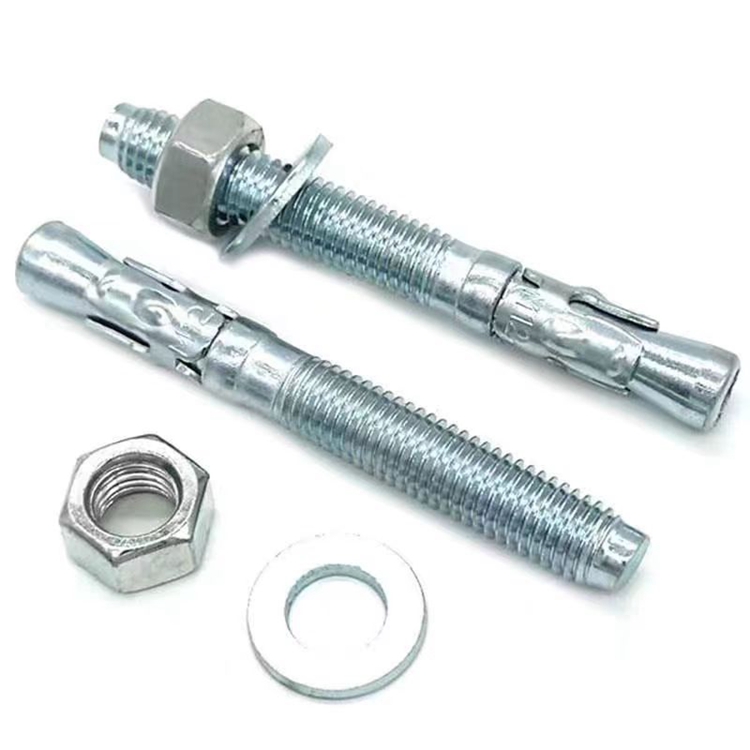Carriage Bolt Production Facility and Manufacturing Insights for Quality Hardware Solutions
Oct . 31, 2024 21:07 Back to list
Carriage Bolt Production Facility and Manufacturing Insights for Quality Hardware Solutions
Understanding Carriage Bolts and Their Manufacturing Process
Carriage bolts are a vital fastening component used in various construction and engineering applications due to their unique design and versatility. Characterized by a domed head and a square neck that prevents rotation when tightened, carriage bolts are primarily used to secure wood and metal together. This article delves into the world of carriage bolt factories, exploring their manufacturing processes, applications, and significance in the industry.
The Manufacturing Process
The journey of a carriage bolt from raw material to finished product begins in a specialized factory. The process typically starts with high-quality steel, which is selected for its strength and durability. This raw material is often sourced from reputable suppliers to ensure that the final product meets rigorous industry standards.
1. Cold Heading The first step in the production of carriage bolts is cold heading, where the metal wire is cut into small lengths and then forged under high pressure into the head of the bolt. This process not only shapes the head but also increases the strength of the metal through work hardening.
2. Shaping the Shaft After cold heading, the next phase involves shaping the shaft of the bolt. This is done through processes like extrusion or rolling, which give the bolt its characteristic cylindrical shape. The dimensions of the shaft, including its diameter and length, can be adjusted based on specific requirements.
3. Adding the Square Neck One of the distinguishing features of carriage bolts is the square neck, designed to fit into the material to prevent rotation during installation. This is typically achieved through a process called forging, which adds additional strength to this critical area of the bolt.
carraige bolts factory

4. Surface Treatment Once the basic shape of the bolt is complete, surface treatments are often applied to improve corrosion resistance and aesthetics. Common treatments include galvanization, where bolts are coated in a layer of zinc, or black oxide coating, providing additional durability against the elements.
5. Quality Control The final stage in the manufacturing process is rigorous quality control. Each batch of carriage bolts undergoes testing to ensure they meet specific standards for strength and durability. This includes tensile tests, dimensional checks, and visual inspections to catch any defects.
Applications of Carriage Bolts
Carriage bolts can be found in a wide range of applications across various industries. They are commonly used in furniture assembly, construction projects, and automotive manufacturing. Their ability to securely fasten materials together makes them ideal for outdoor structures like decks and playgrounds, where safety is paramount.
In furniture manufacturing, carriage bolts are preferred for their aesthetic appeal, as the smooth, rounded head gives a clean finish. In construction, their durability and resistance to pulling forces make them essential for structural applications, including securing timber beams and other heavy components.
Conclusion
Carriage bolts play an indispensable role in numerous industries, thanks to their unique design and sturdy construction. Understanding the manufacturing process behind these essential fasteners reveals the complexity and precision required to produce a reliable product. As construction and engineering continue to evolve, the importance of high-quality carriage bolts will remain unchallenged, ensuring their lasting presence in the market. Factories dedicated to their production are not just manufacturing units; they are the backbone of structural integrity in everyday life.
Latest news
-
High-Quality Panel Stud Bolt Reliable Panel Stud Bolt Factory & Suppliers
NewsJul.08,2025
-
High-Precision Fine Thread Locknuts Manufacturer & Supplier Custom Solutions
NewsJul.08,2025
-
PH Imperial Stud Bolt – High Strength Fasteners from Leading Supplier & Factory
NewsJul.07,2025
-
High-Quality Allen Wrench Bolts Leading Factory, Company & Suppliers
NewsJul.07,2025
-
Wholesale Ball Stud Bolt - High Quality Supplier & Factory Price Reliable Wholesale Ball Stud Bolt Company
NewsJul.06,2025
-
High-Strength Alloy Bolts Manufacturer & Supplier Quality Alloy Fasteners Factory
NewsJul.06,2025
